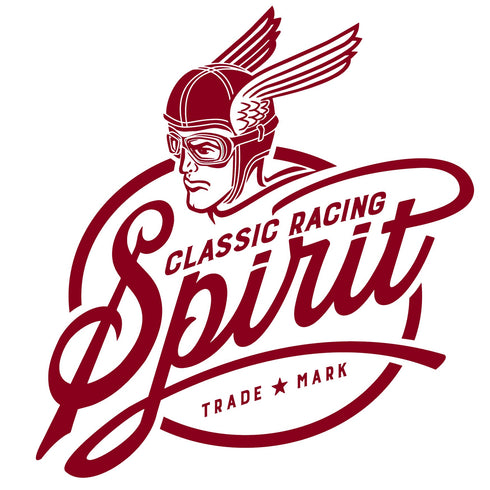Sixty-six years ago today on May 1st 1955, at twenty-two minutes past seven in the morning, a 25 year old British racing driver named Stirling Moss and a bearded and bespectacled motor racing journalist called Denis Jenkinson (known as Jenks), set off from the start line in Brescia for the 22nd running of the Mille Miglia (thousand mile) road race to Rome and back.
Their car was a works-team Mercedes-Benz 300SLR and it was painted all-over in silver with the red race numbers of 722 denoting its start time. It wasn't the fastest or most powerful car in the field, but it was in the hands of a supremely talented driver who had meticulously practiced and tested sections of the route - and it also carried a navigating passenger with a home-made secret weapon.
Already known to each other, Moss and Jenks came together for the race both having had a similar idea that the right passenger could prove useful to the driver in informing him of what to expect on the route ahead - a thousand miles being a lot of road to remember, even for the native Italian competitors.
Having prepared for the race during three practise drives, Moss and Jenks developed a set of notes on key elements of the route where they could gain time by knowing what was ahead. For example, if Moss knew that over a blind summit was a sharp bend he could slow down, whereas if it continued straight he could take the rise flat out. Likewise, if a blind bend opened up almost immediately afterwards he knew just how much to lift to keep the car on the road without losing time unnecessarily. It wasn’t without error; a few times the car took to the air over a bump that in practice had been taken slower and deemed unworthy of a mention, but this reconnaissance had truly given them a competitive advantage.
Helpfully, the Italian roads were clearly marked at each kilometre and Jenks used this to keep his notes synchronised to their progress along the route. They invented a set of hand signals by which Jenks could give Moss direction as the wind and engine noise made any audible form of communication all but impossible.
Jenks’ master stroke in managing these pace notes was to print them on a continuous sheet - mounted in a cassette with a dual roller - which he and Moss nicknamed the toilet roll. With Moss driving from the left seat, Jenks used his left hand for signals and for feeding Stirling sweets, and his right hand to wind-on the toilet roll and operate the horn/light-flash button to warn cars ahead that they were coming through.
Nothing was left to chance. Moss and Jenks learned enough about the car to make emergency repairs and the control and pit stops in Ravenna, Pescara, Rome, Florence and Bologna had been planned and rehearsed by them and the Mercedes-Benz mechanics, each knowing exactly what was required. Hand-signals given by Jenks on approach alerted them to anything unexpected so as to minimise or even eradicate time spent with the car stationary.
With all other aspects of their race optimised, it was then down to Moss to deliver the performance of his life in hunting down the competitors ahead and getting back to Brescia in the shortest time possible. In his account of the race, Jenks often referred to Stirling’s artistry and confidence; deliberately provoking slides that were controlled “with a delicateness of throttle that was fairy-like”.
At well over 100 mph, Moss and Jenks crossed the finish line back in Brescia in a never-to-be-beaten record time of 10 hours, 7 minutes and 48 seconds at an average speed of just under 98 mph. They turned out to be over half an hour quicker than the next fastest driver, a certain Juan Manuel Fangio who was driving an identical car although without the extra weight (or assistance) of a passenger.

Moss became only the second ever non-Italian driver to win the iconic race and the first to do so over the full course (Huschke von Hanstein from Germany winning on a much shorter route in 1940 just before Italy entered the war).
The year of 1955 turned out to be a great season for Moss when at Aintree he achieved the first British Grand Prix victory by a British driver, before winning the RAC Tourist Trophy in Northern Ireland and then taking first place alongside Peter Collins at the Targa Florio in Sicily.
But it was the epic endurance race in the hot May-day sun from Brescia to Rome and back on the 1955 Mille Miglia that Sir Stirling Moss himself remembered, even many years later, as his greatest ever drive.
If you have a spare ten minutes or so, we highly recommend reading Denis Jenkinson’s report of the race in Motor Sport - it gives a detailed first hand account not only of the preparation and the race itself but also an insight into the innate driving mastery of Stirling Moss.
[Photography from Daimler via Mercedes-Benz Classic Centre]
